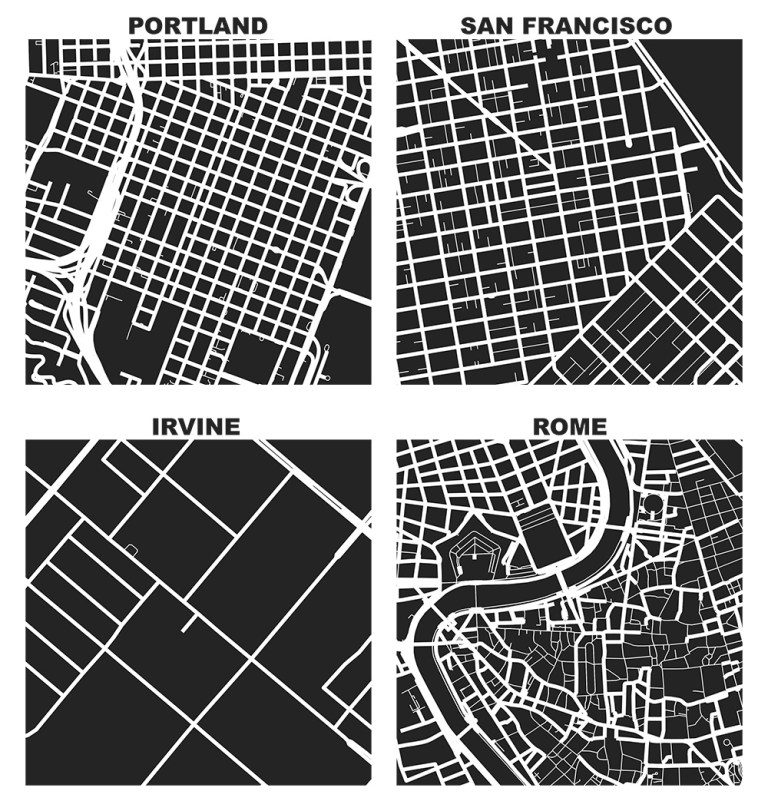What City Observatory did this week
1. A Toast to 2017: Beer and Cities. Its traditional to begin the New Year with a delicious beverage, and more and more Americans are choosing to celebrate with a locally brewed ale. That’s gotten much easier in the past decade, as microbreweries have flourished around the country. Microbreweries are a decided urban affair. The website BeerMap.com claims to have inventoried more than 1,000 microbreweries within five miles of the center of the nation’s 50 largest cities. Using their tabulations, we’ve computed the density of microbreweries for each of these cities, and produced a ranking. See where your city stands on this list.

2. How not to make housing more affordable. In the face of rising affordability problems, there’s enormous pressure on elected leaders to do something–anything–to address the situation. Two recent proposals in the Pacific Northwest caught our eye. Both would provide subsidies to households. British Columbia’s Liberal government has proposed matching first-time homebuyer’s down payments–up to $37,500, while a landlord’s group in Oregon has suggested that the state create a $20 million fund to provide rent subsidies (rather than enacting rent control). While both proposals would provide some relief for their direct recipients, economics suggests that in the face of a tightly constrained housing supply, both measures would mostly serve to bid up rents and housing prices–actually making overall affordability problems worse.
3. Brownstone Brooklyn and the challenge of urban change. Daniel Kay Hertz offers his review of Suleiman Osman’s “The Invention of Brownstone Brooklyn.” The book chronicles the movement of middle-class, mostly white professionals from Manhattan in the 1950s and 1960s, looking for authentically urban neighborhoods in Brooklyn. Paradoxically, it turns out that while seeking authenticity, these migrants loved the people, but disliked the public. Brownstoning was a movement that romanticized the participants in Jane Jacobs’ “street ballet,” but which was committed to holding the city as a whole at arm’s length. Ironically—and unfortunately—this way of relating to urban life is the progenitor of much of contemporary gentrification and anti-gentrification thinking.
4. Pollyanna’s ridesharing breakthrough. You may have seen the headlines last week about a new study claiming that with a ridesharing app and appropriate route assignment software it would be possible to reduce traffic 85 percent in Manhattan. It’s not quite that simple of course. The study in question looks only at replacing current taxi trips with pooled 4-passenger or 10-passenger vehicles. The real problem with this study is that it falls prey to three major fallacies that bedevil much of the techno-optimism about urban transportation, including a failure to consider induced demand, putting too much faith in big data, and assuming that a relatively simple mathematical model can fairly simulate the behavioral responses to a different transportation set-up.
Must read
1. High Transit construction costs. Last week, with great fanfare, New York City finally inaugurated its long anticipated Second Avenue subway. We have a two-fer hear. At Vox, Matt Yglesias writes about the tragedy of the new subway: which has taken vastly longer, cost vastly more, and produced far less than subway development projects in other advanced countries, something that’s long been documented by Alon Levy at Pedestrian Observations. Building a kilometer of subway in New York costs six times as much as it does in Paris, London, or Copenhagen. Yglesias explores the many reasons for the higher costs: unnecessarily larger stations, deeper tunnels, intransigent unions, poor oversight, and more. Writing at the Frontier Group’s blog, Tony Dutzik piles on, adding that we shouldn’t overlook the fact that highway projects tend to be hugely over-priced as well, and in many cases produce minimal or negative social benefits. And he notes that cost overruns, as well as high price tags, serve as a formidable obstacle to thinking we can reasonably expect to do things differently, in a big way. To these diagnoses we can add the “hitch your wagon to a sacred cow” theory: when multi-billion dollar projects get going, they tend to come with a long list of elaborate add-ons to placate a wide range of constituencies as a way of selling the project.
2. Federal infrastructure spending makes us poorer. Writing at Strong Towns, Chuck Marohn challenges the conventional wisdom that a big influx of federal infrastructure funding is a good thing for the nation, especially struggling small towns. While it may seem like free money, generous federal capital grants for road construction often lead local governments to borrow to come up with matching funds and have led to sprawling development patterns, which directly raise utility costs for cities and counties, and in the long run, saddle them with prodigious maintenance costs. The emphasis on funding “new” capacity creates competing, peripheral business locations that effectively undercut the economies and tax bases of older, more central locations.
3. Change local incentives to get more affordable housing. The California Apartment Association convened a policy forum to explore ways to address the Golden State’s growing housing affordability problem, and heard from invited speakers including Trulia’s Ralph McLaughlin, Sonja Trauss of the Bay Area Renters Federation, and Mac Taylor the Legislative Analysts Office. There’s a 19-page report that summarizes the key issues they identified. We would highlight key finding number 4: changing local incentives. A central problem is that local governments have little incentive to approve affordable housing in their jurisdiction. Cities get much more tax revenue from commercial rather than residential development, and also do better fiscally with expensive single family homes than affordable apartments. Individual local governments also face a kind of prisoner’s dilemma: allowing apartments when neighboring jurisdictions don’t means that your community may bear the brunt of the impacts. While these incentive effects may be more prominent in California thanks to the state’s arcane Proposition 13 property tax system, this incentive problem underlies affordability challenges in many cities around the country.

New Research
1. City Street Grid Visualizations. Streets are the skeletal structure of the city, and the network of streets–their width, spacing, number of intersections–defines the fabric of urban interaction. The University of California, Berkeley’s Geoff Boeing has created a series of same-scale diagrams of city street grids that allow an easy, intuitive comparison of different cities. Each of the following blocks shows a single mile-square segment in the center of a large city.

Boeing built these maps using Open Street Maps and Python. And he’s posted the code for creating similar maps of any other city in the world. This is a great tool for urban planners to use to better understand and communicate the way streets shape the way we experience our urban environments.
2. Metropolitan Economic Conditions Index. Last month, the St. Louis Federal Reserve‘s indispensable FRED economic data website expanded the list of metropolitan areas for which it computes an economic conditions index. The index, developed by Fed economists Maria Arias, Charles Gascon, and David Rapach, illustrates how a region’s gross metropolitan product (the local analog of gross domestic product) is performing relative to other metropolitan areas. Their analysis shows that different recessions affect metropolitan areas in different ways. Some metros experienced severe downturns in 1990 and 2001, while others largely avoided contraction. Nearly all metros felt the effects of the Great Recession, but the effects were more severe and prolonged in some areas than others. The site allows users to display data for any of the 50 largest metropolitan areas for the period from 1991 onward. The chart below compares the economic trajectories of Portland and Minneapolis-St. Paul. It shows Portland’s economy has overall grown faster, but has been more “boom-and-bust”–growing faster in expansions, and declining more sharply in recessions. This is a useful tool for understanding the cyclical sensitivity of metropolitan economies.
